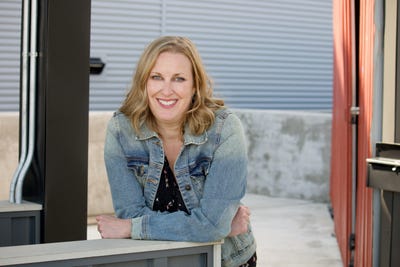Mastering the art of puréed foodMastering the art of puréed food
Taking purées—an important part of senior nutrition—from blobs to truly appealing plates takes artistic talent and an appreciation for the difference it can make.
One of the best compliments for a puréed meal is when a nurse sends it back, thinking that it’s not puréed food.
“Sometimes you’re hard-pressed to tell the difference,” says Chris Greve, director of culinary for senior living at Unidine Corp. “We’ll have a nurse send a meal back and say, ‘No, this patient is on a purée diet.’”
Puréed meals that bear that much resemblance to regular food are the result of training, getting staff excited about it and a commitment to helping seniors dine with dignity.
At the majority of senior living facilities managed by Unidine, an advanced purée program, Purée with Purpose, is in place and talented chefs and cooks are creating puréed plates that look too good to be true. Side-by-side comparisons of foods such as lasagna, breadsticks, turkey, mashed potatoes, cookies and strawberry shortcakes lead to double takes.
Chicken with “grill marks,” potatoes with “skin,” “leaves” of spinach that look garden fresh. All puréed. Better-looking meals provide an infinitely better mealtime experience for patients who need a puréed diet, like those suffering from dysphagia (difficulty swallowing), Parkinson’s disease, dementia and other conditions that make the puréed diet a fact of daily life.
“This makes a difference in their lives,” Greve says. “We can deliver an elevated experience for residents and encourage them to come out of their rooms and eat with their peer group. So many studies show that loneliness leads to depression.”

Old-school puréed meals that look like what the industry refers to as “the three-slop drop,” can make residents feel isolated, embarrassed to eat in a group and just plain not hungry. That means they’re not getting the nutrients they need. But things are changing for the better.
“That’s what purées were: Three scoops of a pale, oatmeal-consistency blob just slopped into a compartment plate,” Greve recalls. “Three different colors of mush in compartments that looked like the game pieces from the Trivial Pursuit game. And we still see that [in the industry].”
To make the leap from blobs to beautiful plates, it takes a champion in the kitchen, a staffer who can take ownership of purées and inspire the rest of the team to get excited about something that’s not known for being fun or flashy.
Often, the purée artist in your kitchen may be waiting to be discovered, Greve advises.
“You never know who your artist is,” he says. At a lot of places, we’ll have a dietary aide who is serving or washing dishes, but all of a sudden they have this outlet in purées. You didn’t know they were an art student.”
Before training begins, Greve likes to get to the heart of the matter.
“Once you find someone who’s taken up the mantle, get them on the floor so they understand that this is something important,” he says. “This makes a difference in their lives. When seniors eat well, they have more ‘good days’ where they’re more upbeat and more active.”

Then, the process for creating great purées begins with a good poaching technique. Greve recommends poaching chicken in chicken stock to add more flavor. Once chicken is puréed to a moldable, somewhat sticky consistency, it can be placed in a cutlet shape mold then painted with grill marks.
Tools of the trade include plastic or silicon molds that can turn foods with a mashed-potato consistency into a very believable chicken cutlet or even a hot dog. Facilities where the chef can create puréed plates to order is the best-case scenario, Greve says. A bigger challenge is an account with production tray lines, with different people filling different parts of the order or in very large facilities where creating good purées becomes a numbers game.
Challenges make it even more important to develop a passion for purées: “Whoever is doing this, it can’t feel like a chore to them,” Greve says. “Approach it like you’re giving them the skills to do this.”
Unidine chefs have been coming up with some great puréed menu items and sharing their knowledge (and having fun) in a three-day “Chopped”-style purée competition in Boston. The prize includes a wrestling belt for the winner, proving that purées can be fun and exciting, after all.
“Some of the stuff they can do is mind-boggling,” Greves says. “More often than not, I find myself calling [a chef at one of Unidine’s accounts] and asking how they did it. It’s really neat and we always find that this is a program that, if we deliver it well, makes our residents a lot happier.”
Photos courtesy of Unidine
About the Author
You May Also Like




.jpg?width=300&auto=webp&quality=80&disable=upscale)

